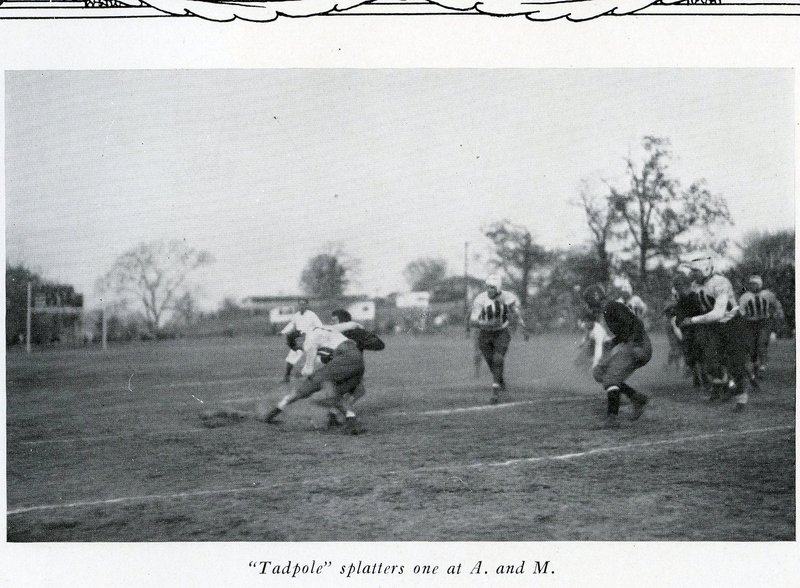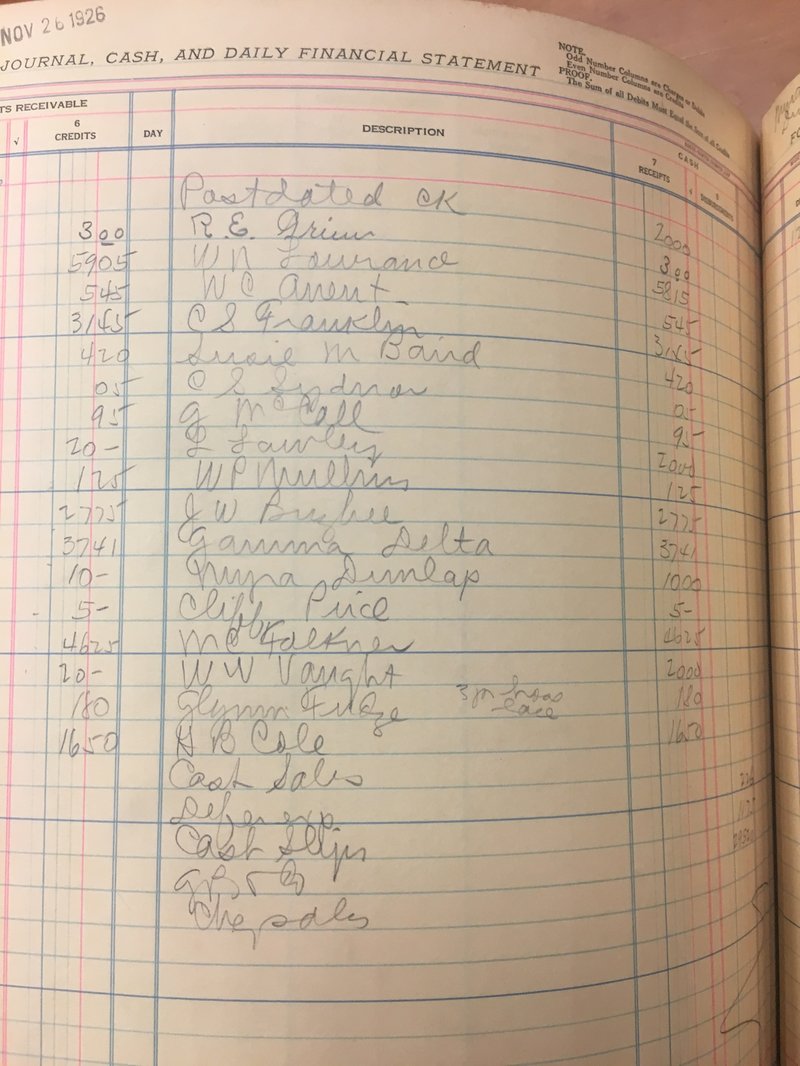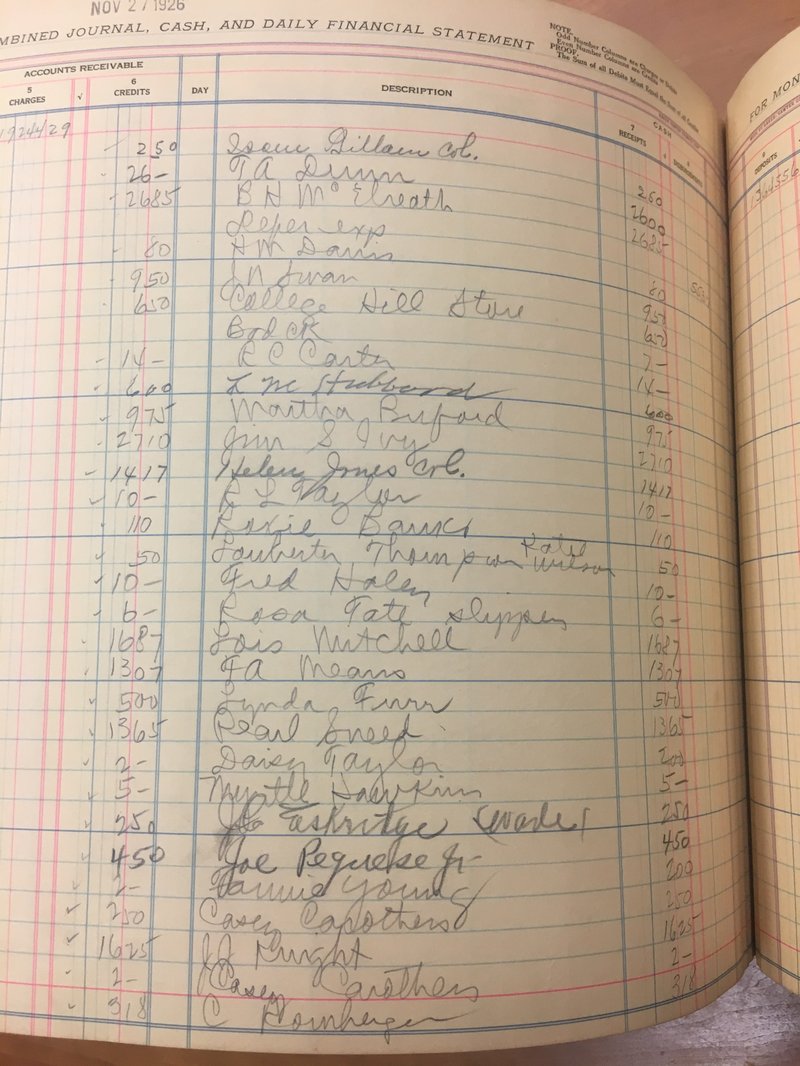Student Work
Football
By: Adam Sullivan

Photo credited to the Ole Miss website
1926 Ole Miss vs. Mississippi A&M: “The Battle of Starkville”
Football has always been a big part of life in the little college town of Oxford, Mississippi mainly centering on the university’s program the Ole Miss football team. This particularly is well noticed in late November around Thanksgiving time in the state due to the annual Battle for The Golden Egg or “Egg Bowl” is played between Ole Miss and it’s in state rival Mississippi State at the end of the season. This is especially noticeable when the game is played in Oxford on campus. The town seems to go into a frenzy during this time as the stores are raided for football/university related items. This was the case even way back in the late 1920’s. On November 25, 1926 in the college town of Starkville, Mississippi, the home of Mississippi A&M which is now Mississippi State University, the Rebels of Ole Miss and the then Aggies of A&M faced off on the gridiron. This rivalry dates back to 1901 and still remains an important game for both schools to this day. This particular game is one of the most significant games in the series’ history because one it was Ole Miss’s first win in the series in thirteen tries, and two its aftermath led to the creation of the trophy that is given to the victor of the game known as the Golden Egg. This game has a significant impact on sales for university attire, accessories, and newspapers for local Oxford businesses including the oldest store in the city Neilson’s on the Square. Even in 1926 this game in particular helped boost sales after the win for the Rebels in Oxford as a significant increase in sales occurred in just a day or two after the game. [1]The day before the game sales were very weak with only about eight sakes made that day on the 24th. But the next two days after the game sales increased dramatically with 17 sales on the 26thand 30 sales on the 27thof that month. (Ledger #37 Day Book Ledger. 1924-1927 for Neilson’s Department Store. University of Mississippi Archives, November 24-27, 1926).
[2]The game was held on Thanksgiving of that year for first time since 1918 and was both the first game on either campus as well as the season ending climax for both teams since 1918. There was a lot of hype coming into this game for both teams by their fanbases, particularly the Ole Miss faithful. The Ole Miss student newspaper, The Mississipian, stated, “Possibly determination would describe the attitude toward this scrap with the farmer boys,” an obvious jab at A&M since it was and still is an agricultural institution. A&M’s paper, The Reflector, stated, “The university is going to bring enough pep-spirit to blow us to pieces unless we have the pep to match theirs”. This turned out to be true as Starkville’s hotels and boarding rooms were filled with people from all around the state to witness the game. Scott Field held 11,000 spectators that day including the lieutenant governor of the time. The Ole Miss Football players arrived with beards and refused to shave them unless they beat the Aggies. The field was muddy. The game started out as a punting battle between both teams. Eventually in the early part of the second frame Ole Miss scored and the center kicked the extra point to put them up by seven points. A&M then scored later in the second frame as well but Ole Miss blocked the extra point kick and the score was 7-6. The rest of the game was a defensive struggle to run out the clock. Finally the game came to end with the 7-6 score remaining. Ole Miss had one the game for the first time in thirteen years! Ole Miss fans rushed the field to tear down the goalposts in celebration while the Aggie fans came after them with wooden chairs. The Reflector stated, “ A few chairs had to be sacrificed over the heads of these to persuade them that was entirely the wrong attitude.” This fight became known as the “The Battle of Starkville”. (Mississippi Mayhem, W. G. Barner, 1982, pgs. 120-123, & 126-127). [3]A spectator was interviewed in 1957 and said the Aggie fans literally beat the Ole Miss fans until wooden chairs were splintered. But the sober minded stopped them before the so called “chair brigade” got too serious. (Friday Flashback: Ole Miss – Mississippi State 1926, November 28, 2014). [4]This game and fight led to the creation of the Golden Egg trophy to ease the tensions between the two schools in the fight’s aftermath (Bloodfeud,The Clarion Ledger, 2000). [5]The following year in 1927 Ole Miss won the game again in Oxford and was presented the first Golden Egg trophy and would dominate the series for many more years afterwards until 1936. (CBS Sports.com A Brief History of The Egg Bowl).
Ledger 37, November 24, 1926 from Neilson’s Collection, Department of Archives and Special Collections, The University of Mississippi Libraries.

Ledger 37, November 26, 1926 from Neilson’s Collection, Department of Archives and Special Collections, The University of Mississippi Libraries.

Ledger 37, November 27, 1926 from Neilson’s Collection, Department of Archives and Special Collections, The University of Mississippi Libraries.
[1](Ledger #37 Day Book Ledger. 1924-1927 for Neilson’s Department Store. The University of Mississippi Archives, November 24-27).
[2](Mississippi Mayhem, W.G. Barner, 1982, pgs. 120-123, & 126-127)
[3]https://olemisssports.com/news/2014/11/28/FRIDAY_FLASHBACK_Ole_Miss_Mississippi_State_1926.aspx
[4](Bloodfeud,The Clarion Ledger, 2000).
[5]https://www.cbssports.com/college-football/news/a-brief-history-of-the-egg-bowl/
